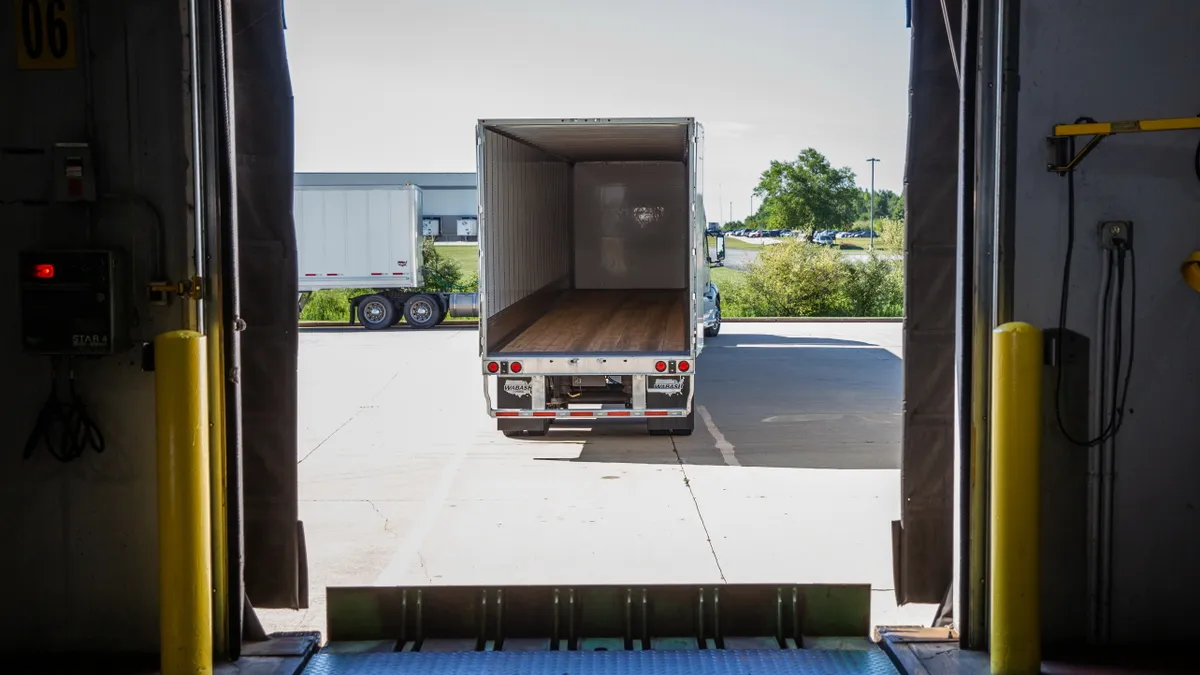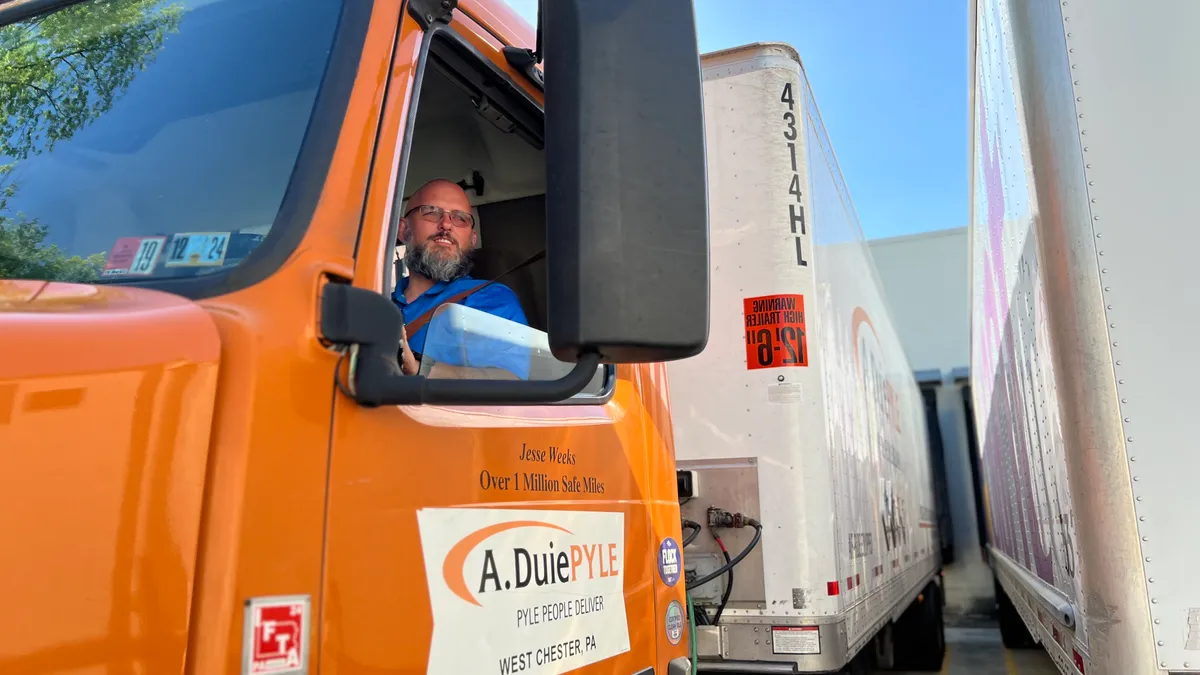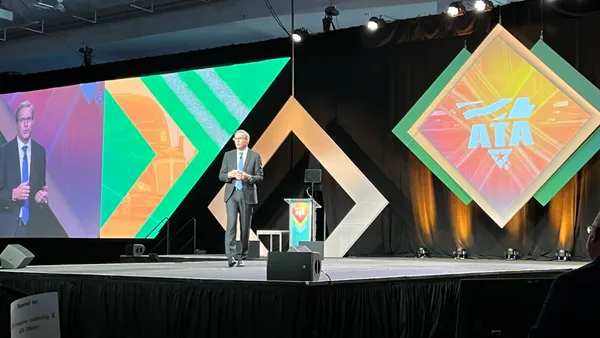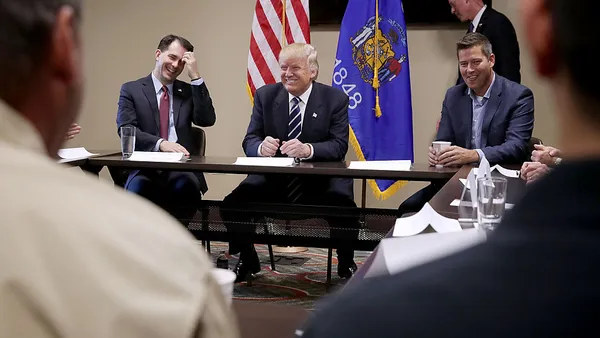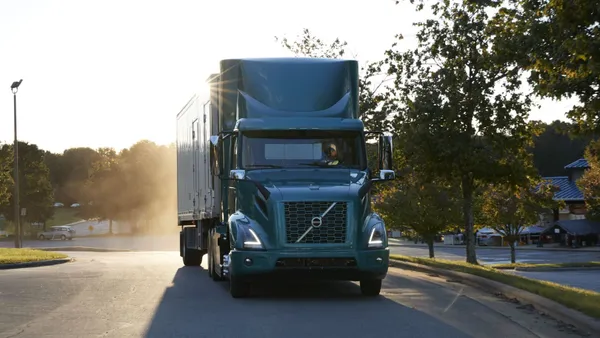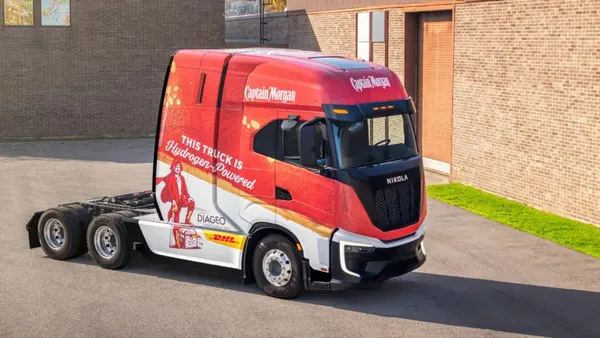Dive Brief:
- April trailer orders plummeted to the lowest level seen since 1990 — a mere 300 units. That marked a 98% drop year-over-year, according to an FTR report issued Friday. Trailer orders for the past 12 months now total 162,000 units.
- With so many factories slowed or shut down, dry vans, heavily dependent on industrial production, are taking the biggest hit from the downturn. FTR confirmed that on Friday when it found the dry van segment "was hit particularly hard." Still, with only 300 total orders in April, refrigerated van orders suffered as well, FTR reported.
- ACT Research said trailer orders are now almost entirely dependent upon state reopening timetables and the U.S. economy. A return of normal business activity will drive freight demand for both manufacturing and consumer spending, said Frank Maly, ACT Research's director of commercial vehicle transportation analysis, in a statement Friday.
Dive Insight:
Three hundred orders is usually the size of one large fleet's monthly order, or perhaps the size of a monthly order from a mid-size state. An order of 300 trailers is a striking snapshot of the condition of the down U.S. economy. On Friday, ACT Research reported this "dramatic cessation" of fleet investment has caused OEMs to quickly reassess production and staffing needs.
Don Ake, FTR VP of commercial vehicles, said bigger fleets are likely to be the first step forward to resume normal trailer order volume, as they will resume replacing old trailers "as soon as they see the economic restrictions lifted and freight growing again."
But for the most part, fleets are still in a "severe wait-and-see" mode, Ake continued. It is a mode FTR mentioned mid-March, after trailer orders in February dropped to recession-levels. But even February, with its 13,000 orders, was much better than April.
A key ingredient to recovery that is currently missing is fleet confidence, which was low before the year even began. Ake said fleets came into 2020 noting weaker freight volumes. Then, the pandemic hit and forced fleets to postpone purchases.
"Higher freight demand will eventually challenge fleet capacity, and drive an improvement in freight rates, which will help build fleet confidence and generate the desired combination of equipment need and ability to pay," said Maly. But the path to a complete reopening is "likely ... arduous."
Ake wrote that fleets won't buy new trailers in large numbers, so long as many uncertainties remain. "They will take the minimum number of trailers needed in the short-run and then increase quantities dependent on the speed and size of the recovery. Orders should improve soon, but are expected to remain modest for the next few months," he said.
FTR officials held a webinar on the midyear outlook on Thursday that indicated that signs of a recovery are not yet fully apparent, but they noted the bottom may have already been plumbed. FTR officials reported dry van freight activity rebounded off an economic bottom but is stuck at low levels. Flatbed and intermodal freight volume have stabilized at low levels, they said.


